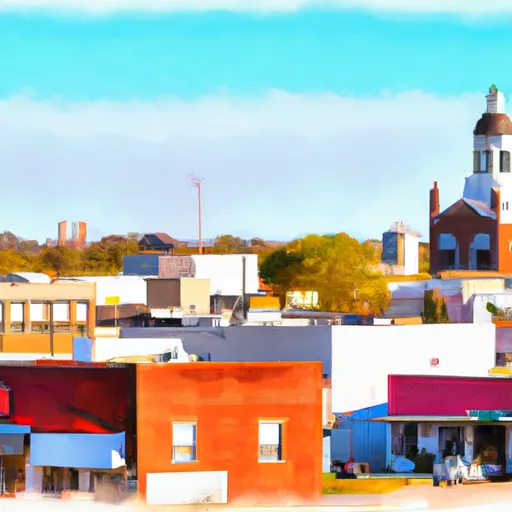°F
°F
mph
Windspeed
%
Humidity











New Albany, Mississippi is a charming city located in the northeastern part of the state. It experiences a humid subtropical climate with hot summers and mild winters. The average temperature ranges from the mid-90s°F (mid-30s°C) in summer to the mid-40s°F (around 7°C) in winter. The area receives a moderate amount of rainfall throughout the year, with the wettest months being March and December.
The hydrology constituents in New Albany are primarily influenced by the Tallahatchie River, which flows through the city. This river provides opportunities for various water-based activities like fishing, boating, and canoeing. Additionally, the nearby Tanglefoot Trail, a 44-mile long converted railroad track, offers scenic views and is perfect for hiking, cycling, and horseback riding.
Outdoor enthusiasts can also explore the Holly Springs National Forest, located just a short drive from New Albany. This forest boasts beautiful trails, camping grounds, and opportunities for wildlife viewing. With its favorable climate and proximity to natural attractions, New Albany provides a great environment for outdoor recreation and exploration.
Weather Forecast
New-Albany receives approximately 1435mm of rain per year, with humidity levels near 86% and air temperatures averaging around 16°C. New-Albany has a plant hardyness factor of 7, meaning plants and agriculture in this region tend to thrive during the non-winter months.
Regional Streamflow Levels
960
Cubic Feet Per Second
164
Cubic Feet Per Second
2,950
Cubic Feet Per Second
17,600
Cubic Feet Per Second
Nearby Camping
| Camping Area | Reservations | Toilets | Showers |
|---|---|---|---|
| Janice Rec.Area | |||
| Shields RV Military - Gulfport NCB | |||
| Davis Bayou - Gulf Islands National Seashore | |||
| Keesler AFB Military | |||
| Gulf Marine State Park | |||
| Big Biloxi Rec Area |



